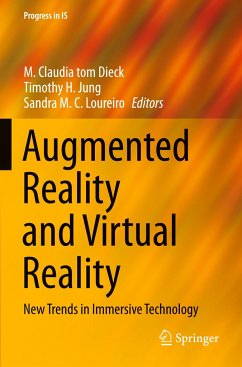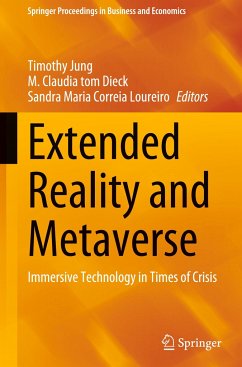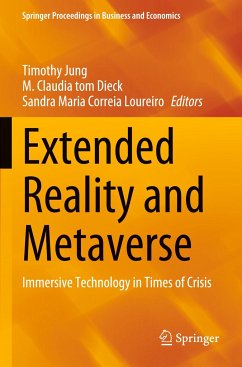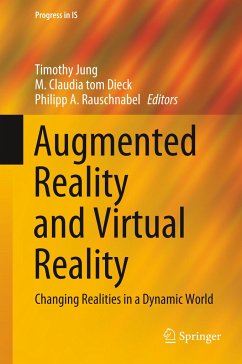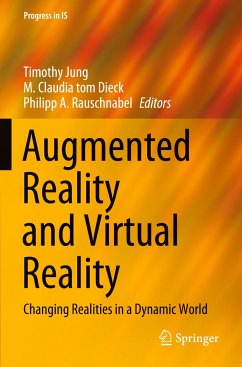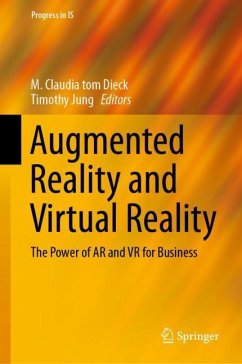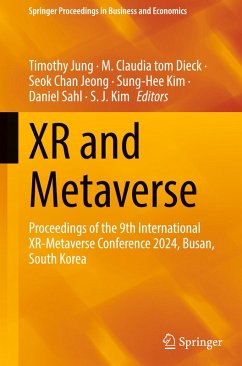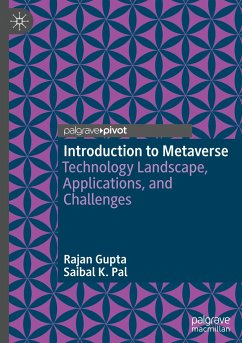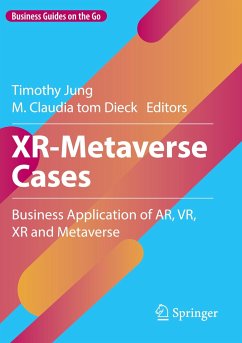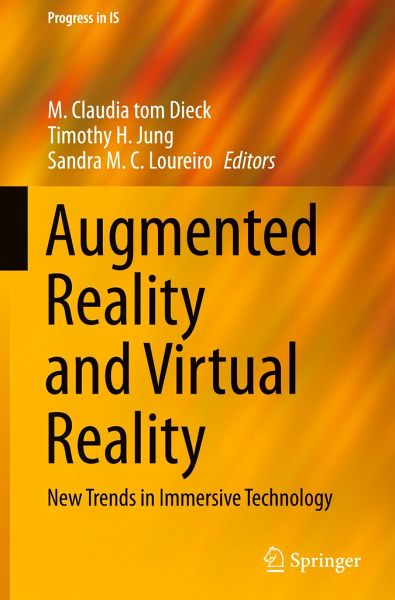
Augmented Reality and Virtual Reality
New Trends in Immersive Technology
Herausgegeben: tom Dieck, M. Claudia; Jung, Timothy H.; Loureiro, Sandra M. C.

PAYBACK Punkte
68 °P sammeln!
This book features the latest research in the area of immersive technologies, presented at the 6th International Augmented Reality and Virtual Reality Conference, held in online in 2020. Bridging the gap between academia and industry, it presents the state of the art in augmented reality (AR) and virtual reality (VR) technologies and their applications in various industries such as marketing, education, health care, tourism, events, fashion, entertainment, retail and the gaming industry.The book is a collection of research papers by prominent AR and VR scholars from around the globe. Covering ...
This book features the latest research in the area of immersive technologies, presented at the 6th International Augmented Reality and Virtual Reality Conference, held in online in 2020. Bridging the gap between academia and industry, it presents the state of the art in augmented reality (AR) and virtual reality (VR) technologies and their applications in various industries such as marketing, education, health care, tourism, events, fashion, entertainment, retail and the gaming industry.
The book is a collection of research papers by prominent AR and VR scholars from around the globe. Covering the most significant topics in the field of augmented and virtual reality and providing the latest findings, it is of interest to academics and practitioners alike.
The book is a collection of research papers by prominent AR and VR scholars from around the globe. Covering the most significant topics in the field of augmented and virtual reality and providing the latest findings, it is of interest to academics and practitioners alike.



